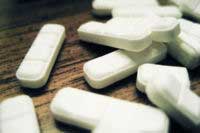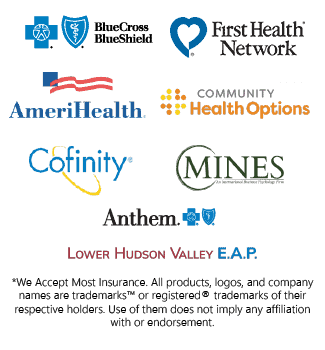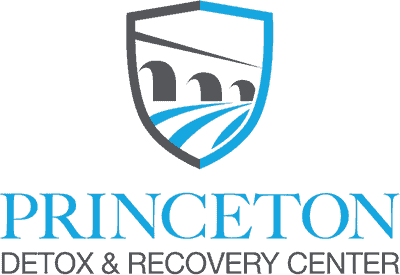Substance abuse and addiction have significant costs to society, including financial, health, and social consequences. In New Jersey, the cost of substance abuse and addiction is substantial, with both direct and indirect costs.
According to a report by the Substance Abuse and Mental Health Services Administration (SAMHSA), in 2019, the estimated cost of substance abuse and addiction in New Jersey was $10.6 billion. This includes the cost of healthcare, criminal justice, lost productivity, and other related expenses.
Overall, substance abuse and addiction significantly impact the economy and quality of life in New Jersey. Reducing the prevalence of substance abuse and addiction through prevention and treatment efforts can have both financial and social benefits for the state.
If you or someone you love has a substance use disorder, Princeton Detox and Recovery Center are available to help. We are dedicated to providing the most comprehensive and individualized medically monitored detox program. To learn more about our programs, contact us today.
How Much Does It Cost the State of New Jersey per Year Because of Drug Abuse & Addiction?
As mentioned, the estimated cost of drug abuse and addiction in New Jersey was $10.6 billion in 2019.
The healthcare cost of substance abuse and addiction in New Jersey was estimated to be $4.8 billion, including hospitalizations, emergency room visits, and outpatient care. The state’s criminal justice cost of substance abuse and addiction was estimated to be $1.4 billion, including arrests, adjudication, and incarceration.
The cost of lost productivity due to substance abuse and addiction was estimated to be $3.3 billion, including absenteeism, reduced work performance, and premature death. Additionally, social costs, such as family disruption, are difficult to quantify but can have significant consequences for individuals and communities.
The Prevalence of Drug Abuse in the State of New Jersey
Drug abuse is a significant public health issue in New Jersey. According to data from the Substance Abuse and Mental Health Services Administration (SAMHSA), in 2019, an estimated 635,000 people aged 12 or older in New Jersey had used an illicit drug in the past year, representing approximately 7.1% of the population.
The most commonly used illicit drugs in New Jersey include marijuana, cocaine, and heroin. In 2019, an estimated 535,000 people in New Jersey had used marijuana in the past year, approximately 116,000 had used cocaine, and about 73,000 had used heroin.
In addition to illicit drugs, prescription drug abuse is a significant problem in New Jersey. According to the New Jersey Department of Health, in 2018, there were approximately 1,163 overdose deaths in the state, with nearly 80% of these deaths involving opioids.
Statistics About Drug Overdose Deaths in New Jersey
Drug overdose deaths are a significant public health issue in New Jersey, as they are in many parts of the United States. Here are some statistics about drug overdose deaths in New Jersey.
Drug Overdose Death Statistics in New Jersey:
- In 2019, there were 3,046 drug overdose deaths in New Jersey, according to the Centers for Disease Control and Prevention (CDC).
- The age-adjusted drug overdose death rate in New Jersey was 27.3 deaths per 100,000 population in 2019, higher than the national rate of 21.6 deaths per 100,000 population.
- The vast majority of drug overdose deaths in New Jersey involve opioids. In 2019, there were 2,675 opioid-involved overdose deaths in the state.
- Synthetic opioids, such as fentanyl, have become a significant problem in New Jersey in recent years. In 2019, there were 2,025 deaths involving synthetic opioids in the state, compared to 1,328 in 2018.
- The number of drug overdose deaths in New Jersey has increased in recent years. In 2015, the state had 1,587 drug overdose deaths, compared to 3,046 in 2019.
Where in New Jersey Do Individuals Use Alcohol & Drugs Most Frequently?
It is difficult to determine with certainty where individuals in New Jersey use alcohol and drugs most frequently, as data on this topic is not always available or may not be representative of the entire population. However, some indicators suggest that substance abuse may affect certain areas more than others.
For example, according to data from the New Jersey Department of Human Services, in 2019, the counties with the highest rates of opioid overdose deaths per 100,000 residents were Atlantic, Camden, and Ocean Counties. However, drug abuse and addiction can affect individuals in all areas of the state, and no community is immune to the problem.
Additionally, data from the National Survey on Drug Use and Health (NSDUH) suggests that in 2019, the highest rates of past-year illicit drug use among individuals aged 12 or older in New Jersey were in the northern and central regions of the state, including the Newark-Union Metropolitan Statistical Area, the Middlesex-Somerset-Hunterdon Metropolitan Statistical Area, and the Bergen-Passaic Metropolitan Statistical Area.
The Annual Economic Costs of Substance Abuse and Associated Diseases in the State of New Jersey
According to the National Institute on Drug Abuse (NIDA) report, the annual economic costs of substance abuse and associated diseases in New Jersey were estimated to be $10.6 billion in 2019. This includes direct costs, such as healthcare and criminal justice costs, and indirect costs, such as lost productivity and reduced quality of life.
The breakdown of costs in the report was as follows:
- $3.6 billion for healthcare costs, including hospitalization, emergency room visits, and treatment for substance abuse and associated health problems.
- $1.5 billion for criminal justice costs, including law enforcement, court proceedings, and incarceration.
- $1.9 billion for productivity losses due to absenteeism, reduced work productivity, and premature death.
- $3.6 billion for other costs, including motor vehicle accidents, child welfare and education, and other related expenses.
Estimating the economic costs of substance abuse is complex, and additional costs may not be included in this estimate. Additionally, the cost of substance abuse is not borne solely by the state government but is also felt by individuals, families, and communities.
Costs of Drug Abuse to Society as Well as to Families in New Jersey
Drug abuse has significant costs not only to individuals and families but also to society as a whole. In New Jersey, these costs can be broken down into several categories:
- Healthcare Costs – Drug abuse and addiction can lead to various health problems, including overdose, infectious diseases, and mental health disorders. These health problems often require medical treatment, increasing healthcare costs for individuals and society.
- Criminal Justice Costs – Drug abuse and addiction can also lead to illegal activity, such as drug trafficking or theft, resulting in criminal justice costs, such as police investigations, court proceedings, and incarceration.
- Lost Productivity – Individuals who abuse drugs may have difficulty maintaining employment, leading to lost productivity for themselves and their employers. This can ripple effect on the economy and result in lost income for the state.
- Family Costs – Drug abuse, including emotional distress, relationship problems, and financial strain, can significantly impact families. Family members may also experience adverse health outcomes or require treatment for related health issues.
Some of the Factors That Play Into New Jersey’s Alarmingly High Rates of Drug Usage
Several factors contribute to New Jersey’s high rates of drug usage:
- Location – The opioid epidemic heavily impacts New Jersey. The state’s proximity to major cities, such as New York and Philadelphia, as well as major transportation routes, makes it a prime location for drug trafficking.
- Prescription Drug Abuse – New Jersey has been particularly affected by the prescription drug epidemic, with many individuals becoming addicted to opioids after being prescribed pain medication. In recent years, efforts have been made to increase the regulation of prescription drug use and improve prescribing practices.
- Poverty and Unemployment – Poverty and unemployment can increase the risk of substance abuse and addiction, as individuals may turn to drugs as a coping mechanism or to escape difficult circumstances. New Jersey has some of the highest poverty rates in the country, particularly in urban areas.
- Mental Health Issues – Individuals with mental health issues are at increased risk of substance abuse and addiction. New Jersey has a high prevalence of mental health disorders, which may contribute to the state’s high drug usage rates.
- Lack of Access to Treatment – Despite efforts to improve access to treatment, many individuals in New Jersey still struggle to access substance abuse treatment due to a lack of resources, stigma, or other barriers.
- Cultural Factors – Some communities in New Jersey have cultural attitudes that may contribute to higher drug usage rates, such as a perceived lack of harm associated with drug use or a reluctance to seek treatment due to stigma.
How Much Financial Damage Does the Usage of Drugs and Alcohol Do to U.S. Companies Each Year?
The financial damage caused by drug and alcohol usage to US companies each year is difficult to quantify precisely, as many factors are involved, such as lost productivity, absenteeism, accidents, and healthcare costs. However, there have been several estimates made by different organizations.
According to a study by the National Safety Council, the cost of substance abuse to employers in the US was estimated to be $81 billion in 2019. This estimate included direct costs, such as healthcare expenses and workers’ compensation claims, and indirect costs, such as lost productivity and increased absenteeism.
Another estimate by the Substance Abuse and Mental Health Services Administration (SAMHSA) found that the cost of substance abuse to US businesses was over $400 billion annually when considering lost productivity, absenteeism, turnover, and increased healthcare costs.
A National Institute on Drug Abuse (NIDA) report found that drug abuse and addiction cost the US economy more than $740 billion annually in healthcare expenses, criminal justice costs, and lost productivity.
Contact Us to Learn More
At Princeton Detox and Recovery Center, we remain dedicated to providing our clients with a comprehensive program of medically assisted detox that focuses on much more than physical stabilization. In addition to emphasizing physical recovery, we tackle mental, emotional, and spiritual well-being. While prioritizing a safe and pain-free withdrawal, we offer individual, group, and family therapy sessions, case management services, relapse prevention training, and aftercare planning.
Contact us today if you or your loved one is ready to begin an entirely new way of life and commit to long-term recovery. As soon as you call, we start developing a plan of action that begins with an initial pre-assessment. This assessment helps us determine the most appropriate level of care for each unique case. We identify potential coverage options if our medically monitored detox program is a good fit. We work closely with most major regional and national insurance providers. Contact us today for a free, no-obligation insurance benefit check.

Reviewed for accuracy by:
Amanda Hilzer M.Ed, CAADC, IADAC, ICCS, LCADC, CCS
Amanda graduated from Lehigh University with both an undergraduate degree in Psychology and a Master’s of Education degree in Counseling Psychology and has worked in the field of substance use disorder treatment and mental health treatment as a counselor and as a clinical manager for over 14 years.

































